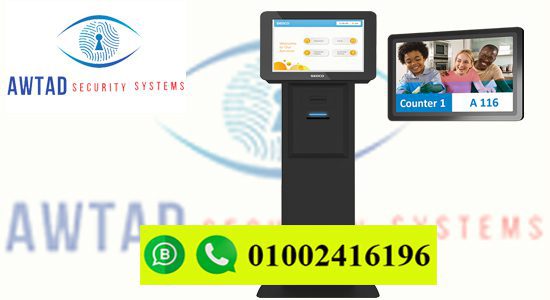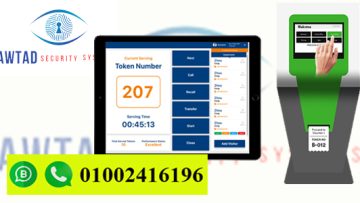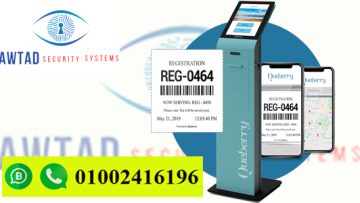
Mastering Customer Flow : The Strategic Imperative of a Modern Queue Management System
In today’s fast-paced world, customer expectations for seamless and efficient service delivery have never been higher. Long queues and disorganized waiting areas are no longer just an inconvenience; they are significant deterrents that can lead to customer frustration, negative reviews, and ultimately, lost business. This is where a robust Queue Management System (QMS) becomes not just an advantage, but a strategic imperative. Far more than just a simple ticket dispenser, a modern QMS is a sophisticated technological solution designed to optimize customer flow, enhance the overall customer experience (CX), and significantly boost operational efficiency across various industries.
What is a Queue Management System (QMS)?
At its core, a Queue Management System (QMS) is a structured platform that organizes and manages the flow of people waiting for a service. It’s a digital evolution of the traditional waiting line, transforming a potentially chaotic experience into a controlled, transparent, and fair process. Historically, queues were simply physical lines, leading to perceived unfairness, frustration, and a lack of control. Modern QMS solutions leverage technology to eliminate these pain points, providing order, transparency, and a more pleasant environment for both customers and staff.
A comprehensive QMS typically encompasses a range of interconnected components that work in harmony to guide customers through their service journey, from the moment they arrive until their needs are met. This integrated approach ensures that every step of the customer’s waiting experience is managed effectively, reducing physical bottlenecks and significantly improving customer perception of wait times, even if the actual service duration remains the same. The essence of a QMS lies in its ability to bring structure to demand, ensuring that services are delivered efficiently and equitably.
Key Components of a Modern Queue Management System
A truly effective and modern Queue Management System is a sophisticated ecosystem of hardware, software, and sometimes mobile applications. Understanding these core components is crucial to appreciating the full scope of a QMS’s capabilities:
1. Ticket Dispensing Units / Kiosks:
These are the first touchpoints for customers upon arrival. Modern kiosks are often sleek, touchscreen interfaces that allow customers to select the specific service they require. Once chosen, the unit dispenses a physical ticket with a unique queue number, service name, and sometimes an estimated wait time. Advanced kiosks can also offer digital tickets sent directly to a customer’s smartphone via SMS or QR code, eliminating the need for paper. This initial interaction is critical for setting the tone of the customer’s journey, ensuring they enter the correct queue from the outset.

2. Digital Signage Displays:
Strategically placed throughout the waiting area, these large screens serve as the primary communication channel for customers. They display real-time queue status, showing which customer number is currently being served and directing them to the corresponding service counter or desk. Beyond just numbers, these dynamic displays can also be used to show valuable information such as estimated wait times, promotional content, important announcements, or even engaging multimedia, effectively transforming passive waiting into an opportunity for engagement and information delivery.
3. Staff Calling Units / Interfaces:
These are the tools used by service agents to call the next customer in the queue. They can be physical devices on the counter or, more commonly, web-based software interfaces accessible from a computer. When an agent clicks “Call Next,” the system automatically updates the digital displays and triggers an audio announcement (if enabled), directing the customer to the specific counter. These interfaces also allow agents to transfer customers to different queues, mark a service as complete, or even pause their queue for short breaks, providing complete control over their service flow.
4. Central QMS Software:
This is the “brain” of the entire Queue Management System. This powerful software orchestrates all components, manages the queue logic, and collects invaluable data. It provides administrators with real-time dashboards to monitor customer flow, agent performance, and waiting times across all service points. This central hub is also responsible for generating comprehensive reports and analytics, offering deep insights into peak hours, service bottlenecks, and overall operational efficiency, empowering data-driven decision-making.
5. Mobile & Virtual Queuing Solutions:
Representing the cutting edge of QMS technology, these solutions allow customers to interact with the queue remotely. Customers can check in or join a virtual queue via a mobile app or web portal before even arriving at the physical location. They receive real-time updates and notifications (e.g., “You are 3rd in line”) via SMS or app alerts, allowing them to wait elsewhere or manage their time more effectively. This dramatically reduces the need for physical waiting and enhances convenience, especially for businesses that can integrate appointment scheduling directly into their QMS.
The Transformative Benefits of Implementing a Queue Management System
The adoption of a modern Queue Management System brings a multitude of strategic advantages that resonate across the entire organization and directly impact the bottom line:
1. Enhanced Customer Experience (CX):
This is perhaps the most significant benefit. By providing transparency, fairness, and comfort, a QMS dramatically reduces customer frustration and perceived wait times. Customers feel valued and in control, leading to higher satisfaction levels and increased loyalty. The ability to wait comfortably or even remotely transforms a potentially negative experience into a positive, managed one.
2. Increased Operational Efficiency:
A QMS optimizes staff allocation and streamlines workflows. Managers can monitor real-time data to identify peak hours and adjust staffing levels accordingly, ensuring no counter is over or under-staffed. This intelligent resource management reduces idle time, increases throughput, and allows staff to focus on delivering quality service rather than managing disorderly queues. The system ensures that customers are directed to the right service point, minimizing misdirection and reducing service time.
3. Valuable Data & Insights:
The central QMS software acts as a powerful data analytics tool. It collects a wealth of information, including average wait times, average service times, peak service hours, abandoned queues, and agent performance metrics. These robust reports provide actionable insights that enable businesses to identify bottlenecks, optimize service delivery processes, evaluate staff efficiency, and make informed decisions for continuous improvement and strategic planning.
4. Improved Staff Satisfaction:
When queues are organized and predictable, staff members experience significantly less stress. They are no longer burdened with managing unruly lines or dealing with frustrated customers. This allows them to concentrate on their core responsibilities, leading to higher job satisfaction, reduced burnout, and improved service quality. A calm, efficient environment benefits everyone.
5. Elevated Brand Reputation:
Implementing a modern Queue Management System signals a business’s commitment to customer satisfaction and operational excellence. It projects an image of professionalism, technological sophistication, and customer-centricity. This positive perception translates into a stronger brand identity, attracting new customers and fostering a positive public image.
6. Reduced Walk-aways and Lost Business:
Disorganized and lengthy queues are a major reason for customers to abandon their visit without receiving service. A QMS, by providing clarity and reducing the perceived wait, significantly lowers the rate of walk-aways, directly impacting sales and service completion rates.
Choosing the Right Queue Management System for Your Business
Selecting the ideal Queue Management System requires careful consideration of several factors to ensure it aligns with your specific operational needs and strategic goals:
- Assess Your Needs: What is your average customer volume? How many service types do you offer? What are your peak hours? What is your budget?
- Scalability: Can the system grow with your business? Can it accommodate more service points, locations, or advanced features in the future?
- Integration Capabilities: Can the QMS integrate with your existing CRM, ERP, or other business systems to create a unified data ecosystem?
- User-Friendliness: Is the system intuitive for both customers (kiosks, mobile apps) and staff (calling interfaces, reporting dashboards)?
- Vendor Reputation & Support: Choose a reputable provider with a proven track record, offering reliable installation, comprehensive training, and robust after-sales support and maintenance.
- Reporting & Analytics: Evaluate the depth and customizability of the data analytics and reporting features, as these are critical for continuous improvement.
Conclusion
In conclusion, a Queue Management System is no longer a luxury but a fundamental tool for modern businesses striving for operational excellence and superior customer satisfaction. From optimizing customer flow and significantly enhancing the customer experience to boosting staff productivity and providing invaluable operational insights, the benefits are far-reaching. By carefully selecting a QMS that aligns with their unique needs, businesses can transform waiting from a point of frustration into an opportunity for positive engagement, ultimately strengthening their brand, fostering customer loyalty, and driving sustainable growth. Invest in a smart QMS today to redefine your customer journey and unlock new levels of efficiency.
يمكنك الاستفسار عن طريق الواتس اب او عن طريق الاتصال على الخط الساخن من داخل او خارج مصر 01002416196 (2+)
كما يمكنكم ايضا الاستفسار وطلب عروض الاسعار من خلال الايميل التالي sales@awtadsec.com



